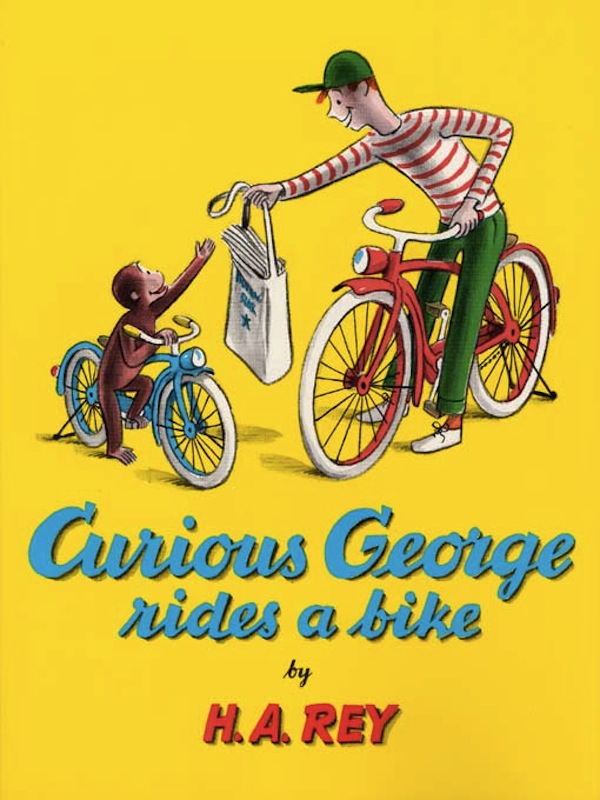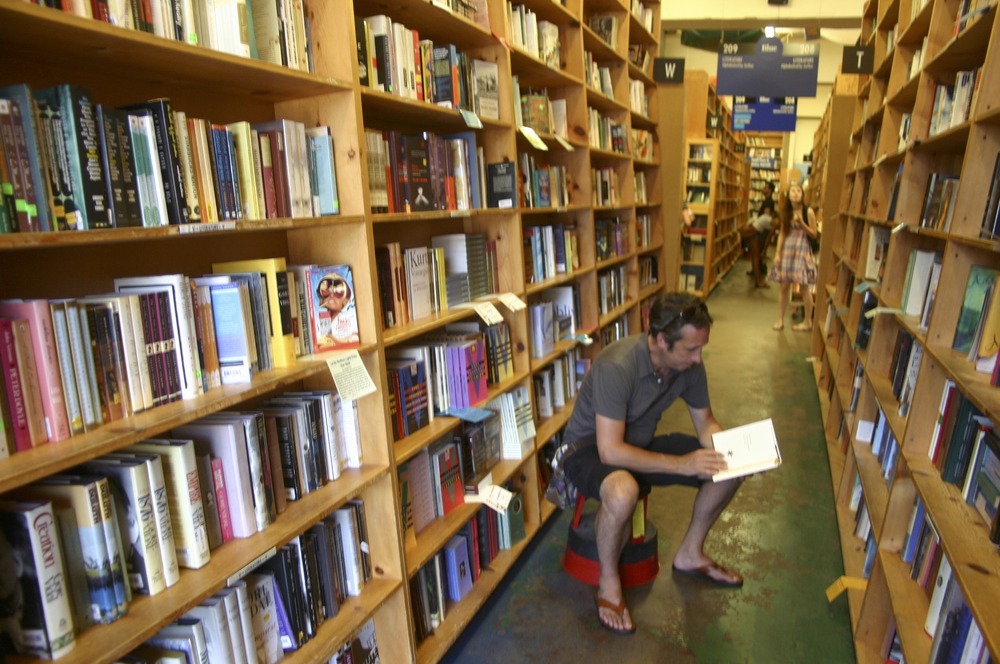Curious Crowe
 Friday, March 22, 2013 at 12:24PM
Friday, March 22, 2013 at 12:24PM
 I recently purchased a copy of the children’s book Curious George Rides a Bike for my son and by coincidence this morning’s episode of PBS’s Curious George, which is broadcasted here on NHK in both Japanese and English, happened to feature an abridged version of the story.
I recently purchased a copy of the children’s book Curious George Rides a Bike for my son and by coincidence this morning’s episode of PBS’s Curious George, which is broadcasted here on NHK in both Japanese and English, happened to feature an abridged version of the story.
As you might imagine, the TV series, which started airing in 2006, differs in a number of ways from the books, which were published as early as 1941. Curious George Rides a Bike came out in 1952.
Take a look at the cover. Notice anything unusual? (Aside from a monkey riding a bicycle.) George and the newspaper delivery boy were both wearing helmets in the TV series. This made “Curious Crowe” wonder when Americans started protecting their kiddies’ noggins. The answer is apparently 1987. While there is no federal law requiring bicycle helmets to be worn by children, some 23 states and more than 200 localities do. Oregon, for instance, requires all children under the age of 16 to protect their heads when riding bicycles.
Incidentally, thirty-four percent of children in the United States (representing more than 22 million children in 11 million homes) live in homes with at least one firearm. In 69% of homes with firearms and children, more than one firearm is present. In best-selling Freakonomics, University of Chicago economist Steven Levitt and New York Times journalist Stephen J. Dubner calculated that having a swimming pool in your backyard was 100 times more dangerous than having a gun in the house. Oh well, still gotta protect those kids’ heads.
Another thing that caused me to pause to think as I read the story was an illustration of “The Man in the Yellow Hat” removing George’s new bicycle from its box. Where one might use a box cutter to slice through the masking tape on a cardboard box today, The Man in the Yellow Hat had to use a hammer and crowbar to pry open the top of a wooden crate.[1]
So when did we start using cardboard to ship everything?
According to Mr. Wiki: “Corrugated paper was patented in England in 1856, and used as a liner for tall hats, but corrugated boxboard was not patented and used as a shipping material until December 20, 1871. The patent was issued to Albert Jones of New York City for single-sided corrugated board. Jones used the corrugated board for wrapping bottles and glass lantern chimneys. The first machine for producing large quantities of corrugated board was built in 1874 by G. Smyth, and in the same year Oliver Long improved upon Jones's design by inventing corrugated board with liner sheets on both sides. This was corrugated cardboard as we know it today. The first corrugated cardboard box manufactured in the USA was in 1895. By the early 1900s, wooden crates and boxes were being replaced by corrugated paper shipping cartons.”
Mr. Wiki also notes that, “The advent of flaked cereals increased the use of cardboard boxes. The first to use cardboard boxes as cereal cartons was the Kellogg Company.”
But that was quite a long time ago. When I think back about my own childhood, one of the earliest memories I have of using cardboard for shipping is when my family moved in 1975 to Portland, Oregon. (It just occurred to me that when I was very young we used to buy navel oranges that were packed in wooden crates. Later on, the oranges came in cardboard boxes that had holes in the side.[2]) Another memory—not a very pleasant one, I’m afraid—of cardboard boxes was of an Easter present I received in the early Seventies. I don’t remember who gave it to me, but I do remember opening the cardboard box and finding a small rabbit inside. Let me tell you, I couldn’t have been happier. The rabbit, unfortunately, died that night, (probably from trying to escape from the box), and a little boy couldn’t have been more devastated.
Speaking of packaging, I was watching an odd Boards of Canada video a few months ago. The film looks like it was made in the early to mid Sixties, judging by the cars and fashion, and was probably meant to instruct children on the dangers of goofing off when riding a bicycle. Anyways, what impressed me most about the video was not the monkeys getting picked off one by one by cars, but the first minute that features a boy sitting at a park bench eating a sack lunch. There is no plastic in the scene. The bottle is glass, the bags and cups are made of paper. The park table is wooden. It made me wonder how we allowed plastic to triumph over our daily lives.
Another thing worth noting about the Boards of Canada video: none of the kids are wearing bicycle helmets.
[1] I was reminded of the scene from “A Christmas Story” when Ralphie’s old man pulls out the fishnet stocking leg lamp from a crate filled with hay. If you don’t know what I am talking about, you owe it to yourself to rent the DVD. “Not a finger!”
[2] I lived in California’s Orange County when the county still had lots of orange groves everywhere. One of my fonder memories was visiting the orange packing plant with my mother when I was in kindergarten.
